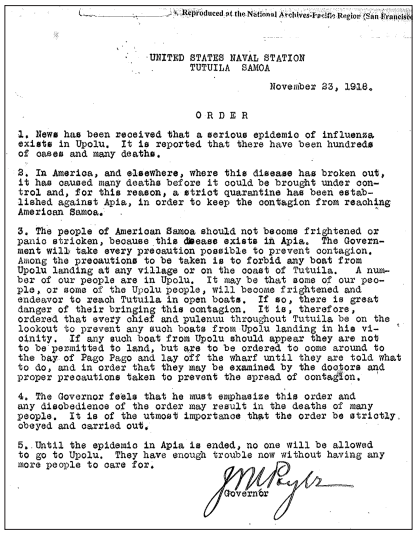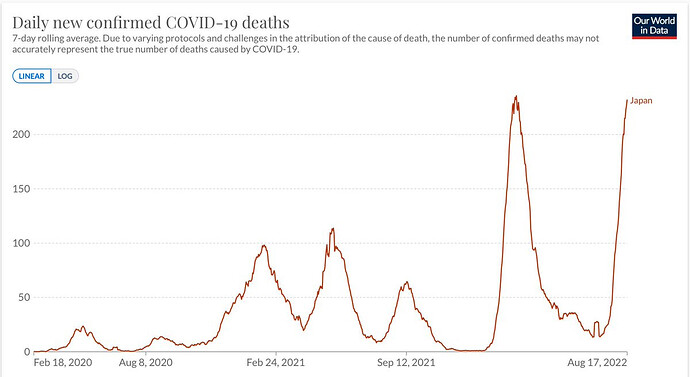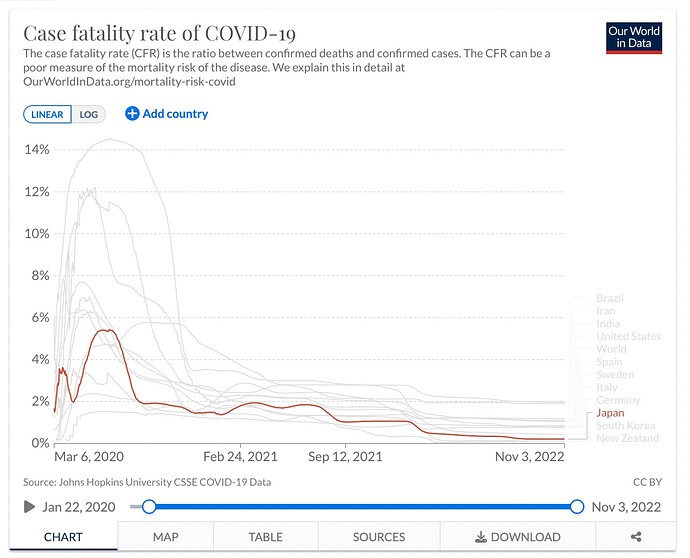As you may know, I’m a lawyer and my husband ( my BMD, “Beloved MD”) is a doctor. He is MY doctor, I’ve never known him to be wrong, I will always do what he recommends. Case in point, we have gotten all of the Covid jabs as they became available. 4? 5? I’ve lost count. It was only the second shot which made me feel I mighta been better off contracting the disease itself: I couldn’t possibly have felt any sicker.
But he is the ONLY reason I’ve submitted to this. The “vaccine”, unlike every other nostrum so designated, does not keep you from getting nor transmitting Covid , as we now know. Does it even lessen severity? How can we be sure, given that the disease is following the usual course, becoming less virulent so it doesn’t kill its hosts before they can spread it around?
I’ll tell ya( because I’m not allowed to say so in front of him) : it’s ok that I got the shots, I ain’t gonna be breeding—but I wish with all my heart that our daughter had NOT gotten them. Who knows what we have yet to find out about the long-term effects?
But I think my BMD’s attitude is in part due to faith in his profession. When you’ve undergone a rigorous educational and initiation such as medical school and internship used to be in past decades, followed by years of private practice (which is—was—like standing in a river, constantly warding off dangerous detritus while remaining steadfastly upright) you really don’t want to, and actually can’t, believe it all wasn’t worth it, may, at any given time have just been a mass delusion.
And I’m the same way about law, and my BMD chides me for my remaining faith in our legal system.
He’s right. Take the Sussman trial (please!) He was charged with lying to the FBI. He DID lie to the FBI! We have the Emails! The same crime used by Comey et al to drive Michael Flynn into disgrace and bankruptcy. But this gent? Acquitted on all counts.
HOW can I still believe in any kind of “justice”? It’s delusional.
But : it IS proving more painful than I would have believed, to relinquish all faith, to trample the crucifix.
It was known for a long time that the SARS virus family is a real challenge for vaccines, see Baric 2006:
It is likely that vaccine approaches that induce less robust neutralizing responses like DNA and killed vaccines, might completely fail in protecting against icGD03 challenge. To rectify this problem, booster vaccines should be considered in senescent populations or new vaccine formulations be assembled that include S glycoprotein determinants that protect against epidemic and zoonotic forms of SARS-CoV.
That should give one some faith into science? Of course, not everyone who publishes papers is a competent scientist. You need to be one to know who’s one. Pursuit of prestige, charisma, and power is typically inversely correlated with the actual competence.
What’s more concerning is the overstatement of vaccine efficacy done by pharma, as Baric reminds us:
Current animal models for SARS-CoV usually display little clinical disease and rarely
cause death, hampering measurements of vaccine efficacy against severe infection and disease.
Another concerning thing is the idea that it’s the number of booster shots one gets and not the time from last booster shot that would matter. As if the revenue maximization of pharma mattered, and not the outcomes. Or the idea that one should rely on vaccines, disregarding all other effective interventions?
Finally, viruses don’t dissipate on their own. Our immune response and the die-off of the unfortunate “unfit” individuals (regardless of their IQ, beauty, strength or whatever other qualities they might possess) help reduce the impact of the virus, but further evolution of the virus increases the impact. The idea that a virus would magically optimize for its own long-term evolution in a world where global travel is the norm, is factually incorrect and supremely dangerous.
Could you elaborate on your last sentence?
Are you saying the received knowledge (that viruses tend to get less virulent but more contagious) is “factually incorrect and supremely dangerous”?
And what has global travel got to do with it? Are you saying any new virus could potentially affect a faraway region the way measles, chicken pox, smallpox legendarily decimated native New World populations?
I’ve stated my position on the Covid vaccine: I’m apprehensive and skeptical, but I yield to the superior knowledge of a physician I trust.
Can you tell me YOUR position (explicitly and patiently, if u please; I ain’t one of the science guys)? Thank you!
-
That viruses get less virulent but more contagious? Here’s an example of Japan that can act as a clear and present counter example:
Their deaths are still extremely low compared to any country employing a mass infection strategy. -
The impact of global travel is quite interesting. Imagine a village getting a nasty virus: that village would shrink or become extinct before the disease could spread to the next village. As the message would spread across, it would spread faster than the virus. Analyzing historic samples of pathogen DNA, they were able to time the spread. With global travel, the pathogens spread rapidly, perhaps more rapidly than the precautionary messages.
-
As for Covid vaccines, I try to get a booster just before a new wave starts building up. For example, I’d have gotten a booster one month ago if I lived in an urban center. I’ll get a booster in the next week because I’ll be traveling in a month. After 3-4 months, the vaccine efficacy is significantly reduced, and can even be negative as people overestimate their level of protection with abating antibody counts and increasing immune evasiveness of new virus variants.
Thanks. So You obviously believe in the vaccines. (You’re in good company as far as I’m concerned. )
And that chart! Ok so viruses do NOT get less virulent over time? I’m always gleeful to see received wisdom exposed as folly. But: as the virus becomes more contagious, wouldn’t it necessarily kill more people as an absolute number, even though fewer of those infected die from it?
How is this a counterexample? As Hypatia points out, the absolute number of deaths can increase even as the virus becomes less virulent.
From Our World in Data:
Thanks for the chart. To some extent humans have developed better treatment protocols, vaccines, and some immunity. But CFR doesn’t quite incorporate the Long COVID problem resulting in persistent excess mortality.
Take a look at what happens when newer variants of the virus hit a population that hasn’t been vaccinated fully or otherwise prepared: Hong Kong COVID-19 Death Rate Is Worst in World
If nonambulatory vectors transmit to other nonambulatory vectors, virulence evolves to the limit of such vectors. The rate of contagion only controls the rate at which virulence evolves from such situations.
Over the last 15 years, I’ve given away several of copies of Ewald’s “Plague Time” to doctors as far afield as Russia because although they are all familiar with the aspect of evolutionary medicine involving antibiotics abuse, very few are familiar with Ewald’s theory of the origin of the virulence of the 1918 pandemic. I’ve still got a couple of copies I keep in reserve.
I know I’ll be sorry, but…okay. “Non ambulatory vectors”. What mean? Obviously fleas, rats, and people are “ambulatory vectors” of disease.
I looked up Ewald’s book. I remember hearing decades ago the idea that all the ills the flesh is heir to are in fact caused by “germs” which I reckon is a generic term for microorganisms. Like f’rinstance, after decades, nay, a century! of attributing stomach ulcers to stress, somebody finally discovered H. Pylori.
Is that what you’re getting at about the 1918 flu? Can you tell me in 50 words or less what Ewald DOES think about it?
To be clearer I should have said “Non ambulatory human vectors” even though Wikipedia says
In epidemiology, a disease vector is any living[1] agent that carries and transmits an infectious pathogen to another living organism.
Ewald’s theory about the virulence of the 1918 flu in a nutshell:
WW I field hospitals crammed beds close together. People in beds are “non-ambulatory” – meaning they can be infected by a pathogen so virulent that it reproduces with wild abandon within the victim to the point that the victim can’t stand up and walk around because so much of their tissue has been turned into pathogens. This “non ambulatory vector” then sheds pathogens in copious amounts but since the victim isn’t moving around, the pathogens just fall nearby and find no further victims. If that situation obtains in general, highly virulent pathogens die out because they over-exploit their hosts. But… if there is a potential host victim nearby that is also in a bed…
Oh okay, thanks. That is simple enough: isolate the sick, don’t jam ‘em all in together? But if the victims brought to bed in a lazaretto are already infected, how does this help the pathogen?
Good question. In a quarantine facility (e.g. lazaretto) one can frequently count on host immune system cross immunity between strains of different virulence. This is, in fact, how vaccines work and why ambulatory human vectors tend to evolve less virulent strains that then become more transmissible thereby developing natural “vaccinations” of entire populations against the more virulent strains.
However, keep in mind that the more virulent the strain, the more competitive it is in turning host flesh into more of itself. So there is no guarantee that virulence won’t evolve in a lazaretto nor even, heaven forbid, in ambulatory human vectors.
Quarantine was always about isolating the sick. This was the first time we “isolated” the healthy.
Princeton University isolated the entire campus in 1918 and was spared. This is called “protective sequestration” – a phrase that unfortunately is nearly taboo among public health officials because it is one cognitive step away from that to permitting the plebs the equivalent of gated communities that currently only the wealthy can afford. The government (and so-called “libertarians” that recognize no such thing as land held in trust for the posterity of the founders of a polity) are hostile to “protective sequestration” because they are, by in large, riddled with virulent strains of humans seeking other human flesh to devour.
Now here, with the mention of gated communities, you’re getting into my bailiwick.
But first, it seems to me that “lockdown” IS “protective sequestration”. I really don’t think that was or would have been a tabu phrase in 2020.
But what’s your point about gated communities? Whether they have a physical gate or not, all planned communities (and it’s difficult now to buy a single-family home that isn’t part of such a deed-restricted plat) can be said to represent a form of sequestration, just as, indeed, every single family detached dwelling can be said to do so.
I totes agree that the Dems are trying to get rid of residential “sequestration”. We don’t have to figger this out; they SAY so! My latest article, “Deed Men Walkin’: Can HOAs save single family dwelling districts?” (the Pennsylvania Lawyer May 2022) is about that very topic.
But what are YOU saying: that the Lefties and Libs won’t openly advocate “protective sequestration”of the healthy because it’s analogous to single family planned communities?
Seems to me they already DID advocate protective sequestration , on a grand, hitherto unimaginable scale.
(This comment is part of my feeble attempt to learn to speak Jabowery.)
In the 1918 influenza, the U.S. territory of American Samoa almost entirely isolated itself and was the largest state to completely avoid any fatalities from the disease. Just 100 km away, in Western Samoa, the pandemic killed around 25% of the the population. This is described in a 2013 paper, “Paradise Locked: The 1918 Influenza Pandemic in American Samoa” (full text [PDF]). Here is the abstract:
The 1918 influenza pandemic killed roughly 5% of the global population. In Polynesia death rates were greater, reaching as high as a quarter of inhabitants in Western Samoa. Despite being less than 100km from the disaster in Western Samoa, and despite the close cultural links with the New Zealand governed colony, American Samoa successfully excluded the infection for years; becoming the largest known state to avoid any deaths from the pandemic. This success was facilitated by isolation, limited trade, a colonial government with absolute power but little oversight, and a working relationship between the US Navy and the traditional Samoan elites. While the crisis would fracture relations with Western Samoa and further isolate American Samoa, the successful quarantine would be seen as a benevolent act by Samoans under American rule and would contribute directly to ongoing American control of the territory.

“https://paw.princeton.edu/article/why-princeton-was-spared”
This may have worked in a small, relatively isolated community, but today such does not exist outside rural settings. If nothing else, there is the need to obtain food. That puts breaks in any such scheme. You are still stuck quarantining the sick as your best bet. We all saw how well doing the whole nation worked.
“The need to get food”…that’s what plague stones were for, right? Big flat stones placed outside a village and if plague struck the hamlet, they depended on the kindness of strangers to put comestibles on that rock.
(Can that be true? Somebody musta been set to watch it from a distance, scurry out and retrieve the offering as soon as the giver had departed. Foodstuffs wouldn’t sit unprotected on a rock even overnight where I live, And there musta been a lot more animals about back in the 14th century…)
When the borders of the three states that then surrounded my village of Lignières in 1535, residents of the village who had traditionally had grazing rights that crossed the border were allowed to continue to use land to the east. What happened subsequently is described in the Franc-Alleu page from my 2007 project “LIgnières, Then and Now”.
Since we’re standing here in the middle of the Rue du Franc-Alleu, a few words are in order about the origin of the curious street name, which is likely to elicit a reaction of «Quoi?» even from fluent speakers of French. Lignières is situated at the boundary of three states dating from the middle ages: the domain of the Bishop of Basel, the Republic of Berne, and the territory of the Count of Neuchâtel. On September 22nd, 1535, the boundaries were defined by a tribunal and stones placed to mark the frontiers. The residents of Lignières, however, traditionally had grazing rights for their livestock which crossed the new village boundary, and to respect these, it was shifted to the east. Unfortunately, this allowed the animals of Lignières and those of residents of the adjacent village of Nods to transmit epidemics to one another, so eventually a sanitary barrier was established along a hedgerow named «la haie de contagion», which was later marked by stones between 1556 and 1613. This was codified officially in a treaty signed June 20th, 1705, which sorted out the rights of the three states to the one by four kilometre band of territory between the two lines of stones. According to this agreement, territory within this zone was exempt from the traditional rights of the sovereign, in particular the “lods”, or tax on the transfer of property. The word “alleu” is derived from the old French “alôd”—a territory owned outright, exempt from feudal obligations such as the lods, and hence “franc-alleu” is a territory exempt from these impositions by the state. Nothing is as offensive to a state as individuals being exempt from its power, so it wasn’t long until the first of many attempts were made to do away with the franc-alleu. No less than the Congress of Vienna, convened to sort out the map of Europe after the defeat of Napoléon I, launched the first assault, mentioning Lignières by name in Article 76; the principality of Neuchâtel chose not to comply. Subsequent abolition attempts were launched in 1842–1843, after the revolution of 1848, in 1888, and in 1920. The sovereign state finally vanquished the franc-alleu in a law adopted on November 20th, 1991, which went into effect on the first day of 1992. Only the street signs remain.
This was, in effect, a permanent quarantine intended to prevent transmission of disease among livestock which remained in effect for more than 400 years. The story combines infectious disease management with another of my favourite topics, allodial title.
Here is a document from 1897, “Lignières et le Franc-Alleu”.
Well, get “allod” of that! You really do know everything!
But were those stones used to deposit food for people in the cordon sanitaire?

